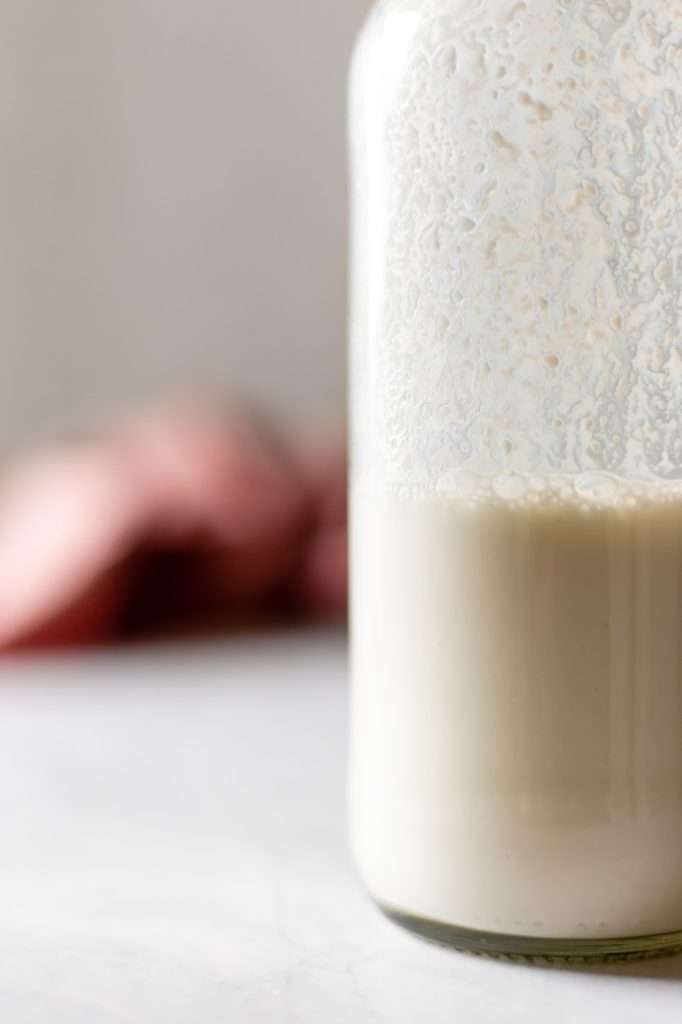- 16 Ounces fresh whole milk (about 500 mL)
- About 20 grams of hydrated and active milk kefir grains
- Add the milk to a glass jar.
- Add in the milk kefir grains and stir the milk gently.
- Place a tight-weave breathable cloth lid on the jar and secure it with a rubber band.
- Allow the milk to ferment for 24-48 hours. (Aim for less time if it is warm in your house. ferment longer if it is cooler in your house)
- When the kefir is finished, you may need to give it a stir. It should be thick, pleasantly tart, you should see “rivers” on the sides of the jar after pouring.
- After fermentation, strain off the kefir grains and add them to a fresh batch of milk. Store the finished kefir in the fridge in a sealed bottle for up to a month.
